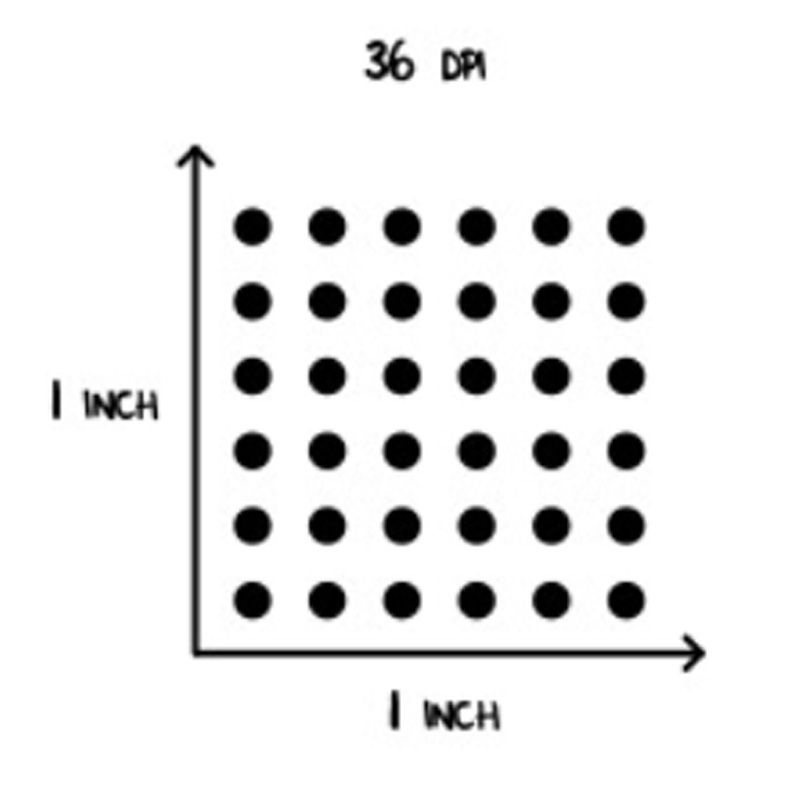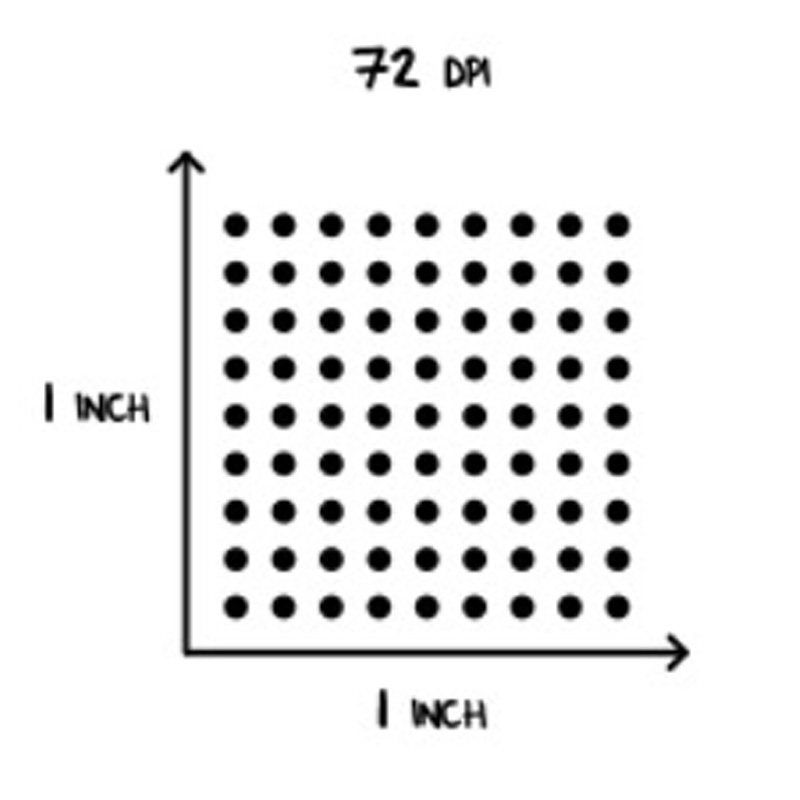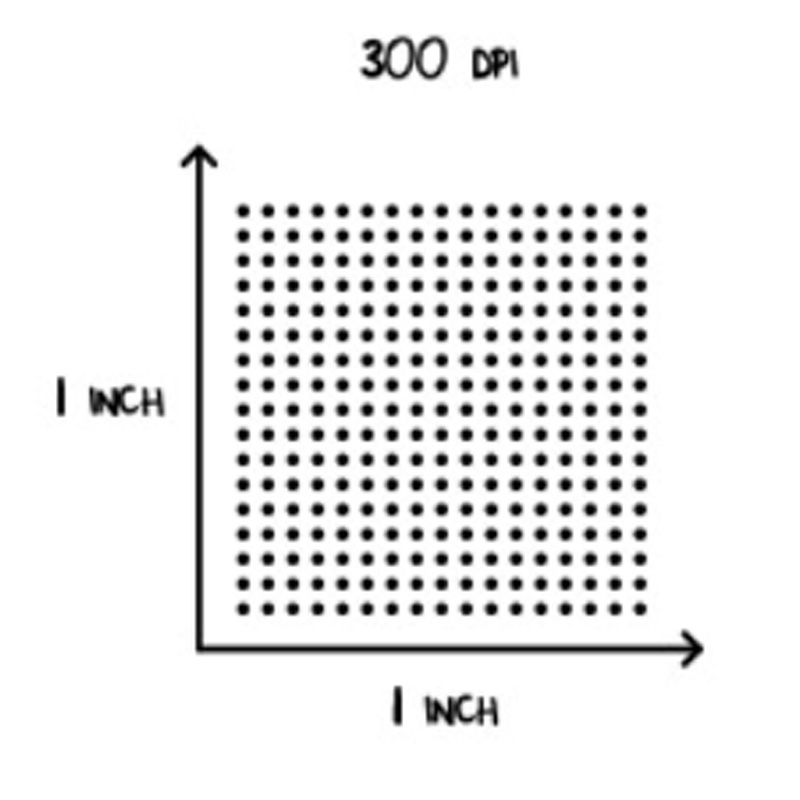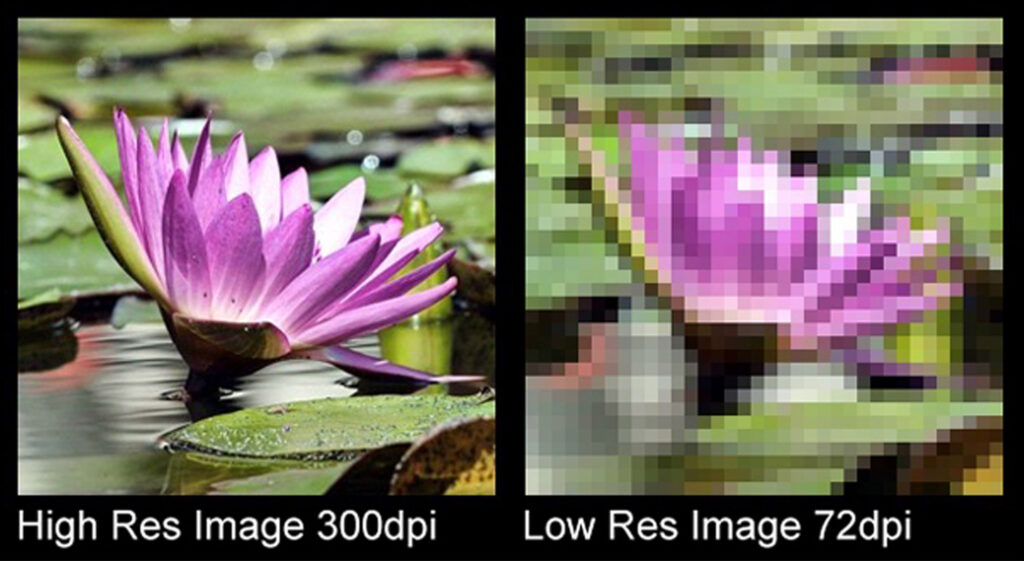What does it Stand For?
In short, DPI stands for dots per inch. It’s a term often used in printing to measure the level of detail a printer can produce.
The higher the DPI, the better the resolution of the print. This is because more dots per inch result in a sharper and more detailed image. So, understanding DPI is crucial when working on printed projects. Here’s a breakdown.
A good way of visualising this is in the diagram below.



What Exactly is DPi?
DPI measures dot density, or the number of dots per square inch a printer can print.
When a printer creates an image, it does so by arranging tiny dots in rows. Fewer dots mean a blurrier image, while more dots mean a clearer one.
A printer’s maximum DPI indicates the highest resolution it can achieve. High DPI means high-resolution prints, and low DPI means lower resolution. Therefore, DPI is a good indicator of print quality, especially for detailed images.
Don't Confuse it With PPi.
DPI vs. PPI In printing, DPI (dots per inch) and PPI (pixels per inch) are often used interchangeably, but they are different.
PPI refers to the number of pixels in a digital image, while DPI refers to the dots of ink a printer can place on a page. Although many printing facilities use them as if they mean the same thing, they don’t.
Both DPI and PPI relate to image quality, but DPI is about printed images, and PPI is about digital images.
Upscaling Images.
You cannot convert a low-resolution image to a high-resolution image but, there’s an alternative called upscaling – you’ll find loads of information about upscaling images online.
Basic upscaling is the simplest way of stretching a lower-resolution image onto a larger image. Pixels from the lower-resolution image are copied and repeated to fill out all the pixels of the higher-resolution display.
More advanced processes include Dithering (blurring the dots as you enlarge so you don’t get a block effect) or AI (using computer prediction based on the surrounding dots to predict what the image should look like at a larger size).
The images below show a high DPI (High Resolution) vs a low DPI (Low Resolution) image.

We can print at lower resolutions depending on the viewing distance, although we always recommend a minimum of 100 DPi – See the table below.











































































































































Please login to post a comment.